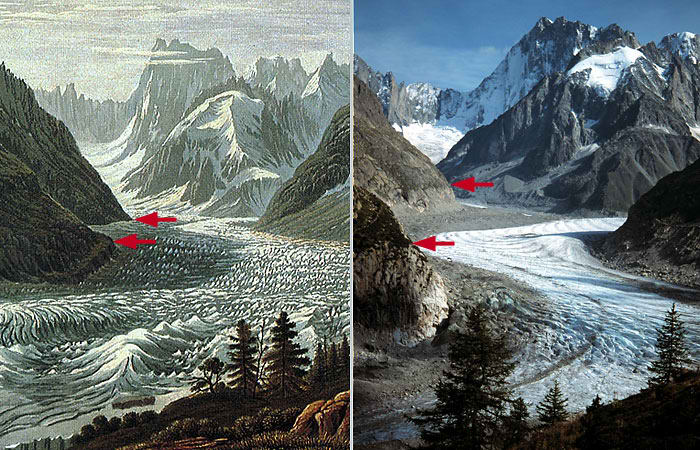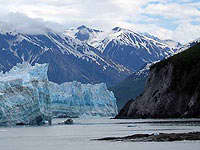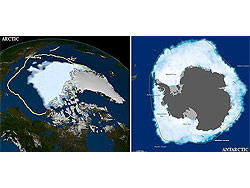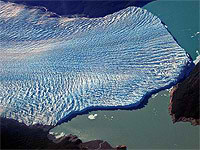El retiro de los glaciares es un fenómeno que se viene dando desde antes de la revolución industrial luego de que la tierra, o algunas regiones de ella, concluyera una pequeña edad de hielo. Imágenes de la pequeña edad de hielo se conservan en el arte y es posible observarlas en museos.
En la siguiente imagen veremos al glaciar Mer de Glace en la región de los Alpes franceses en la región del Mont Blanc. Hacia la izquierda se muestra un fragmento de una pintura de Birman poco después del máximo de la pequeña edad de hielo, la pintura proviene de la colección Gugelmann del Swiss National Library en Berna. Hacia la derecha vemos una fotografía del mismo lugar tomada por M. J. Hambrey en el año 2000.
Enlaces a sitios |
| |
Climbing Magazine Climbing Magazine"s Web site contains more than 30 years of rock and ice climbing news, climber profiles, technical information, and gear reviews. You"ll also find message boards, photo galleries, and classifieds
| Cold Regions Bibliography Between 1999 and 2000, this project was carried out under an Interagency Agreement between the Federal Research Division of the Library of Congress and the U.S. Army Cold Regions Research and Engineering Laboratory (CRREL).
|
Descent into the Ice A tem of "glacionauts" ventures into a labyrinth of unexplored anda hazardous glacier caves on France"s Mont Blanc
| Glacier and Permafrost Hazards in Mountains – GAPHAZ Scientific Working Group of the International Association of Cryospheric Sciences (IACS) and the International Permafrost Association (IPA). Department of Geosciences University of Oslo
|
Glacier hazards The experience and data on glacier disasters in Switzerland has been systematically collected in the past two decades, and historical sources were analyzed.
| Glacier Hazards From Space Glacier hazards represent a continuous threat to human lives and infrastructure in mountain regions.
|
Glacier Hazards in Perú The floods, known in Perú as aluviónes, come with little or no warning and are composed of liquid mud that generally transports large rock boulders and blocks of ice.
| Glaciers and Glacier Hazards Glaciers and Glacier Hazards Glaciers and Ice Sheets and Volcanic Eruptions, USGS/Cascades Volcano Observatory, Vancouver, Washington
|
Glaciers online Glaciers online offers photos and summary explanations concerning glaciers from all over the world. The primary goal of our project is to enrich and stimulate the teaching of Earth Science and Physical Geography, in particular glaciology.. Jürg Alean & Mi
| Global Land Ice Measurements from Space GLIMS (Global Land Ice Measurements from Space) is a project designed to monitor the world"s glaciers primarily using data from optical satellite instruments, such as ASTER (Advanced Spaceborne Thermal Emission and reflection Radiometer).
|










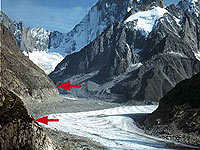
 Imagen: Glaciers online
Imagen: Glaciers online



